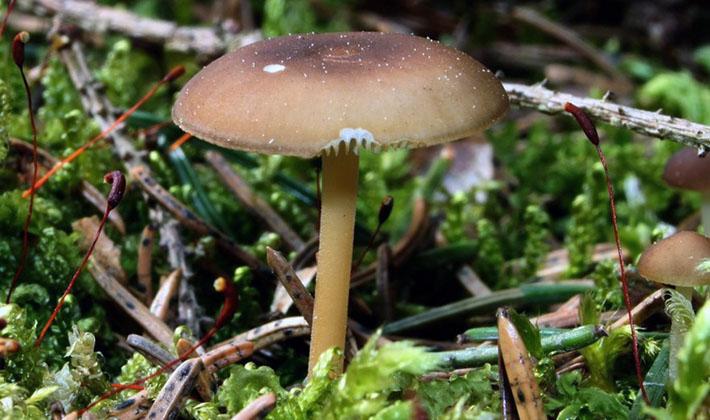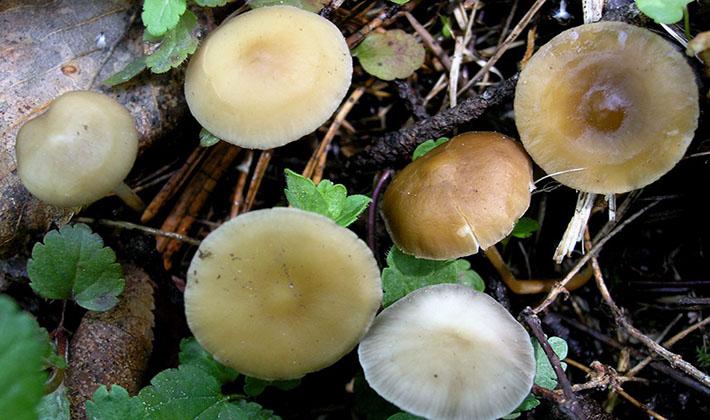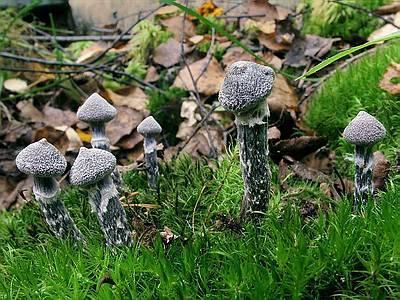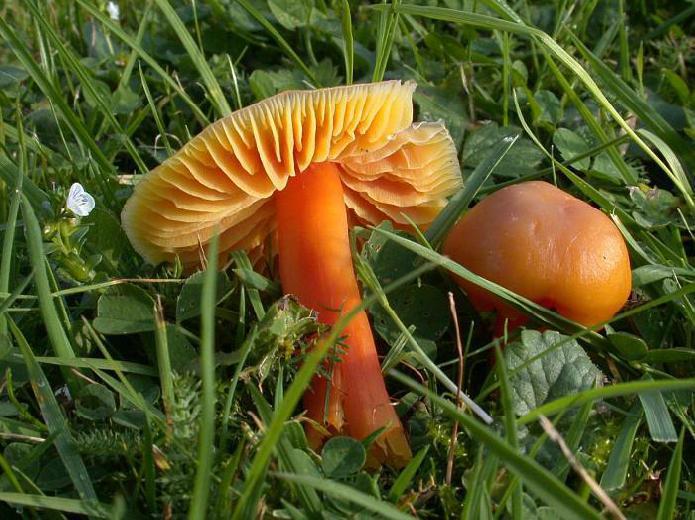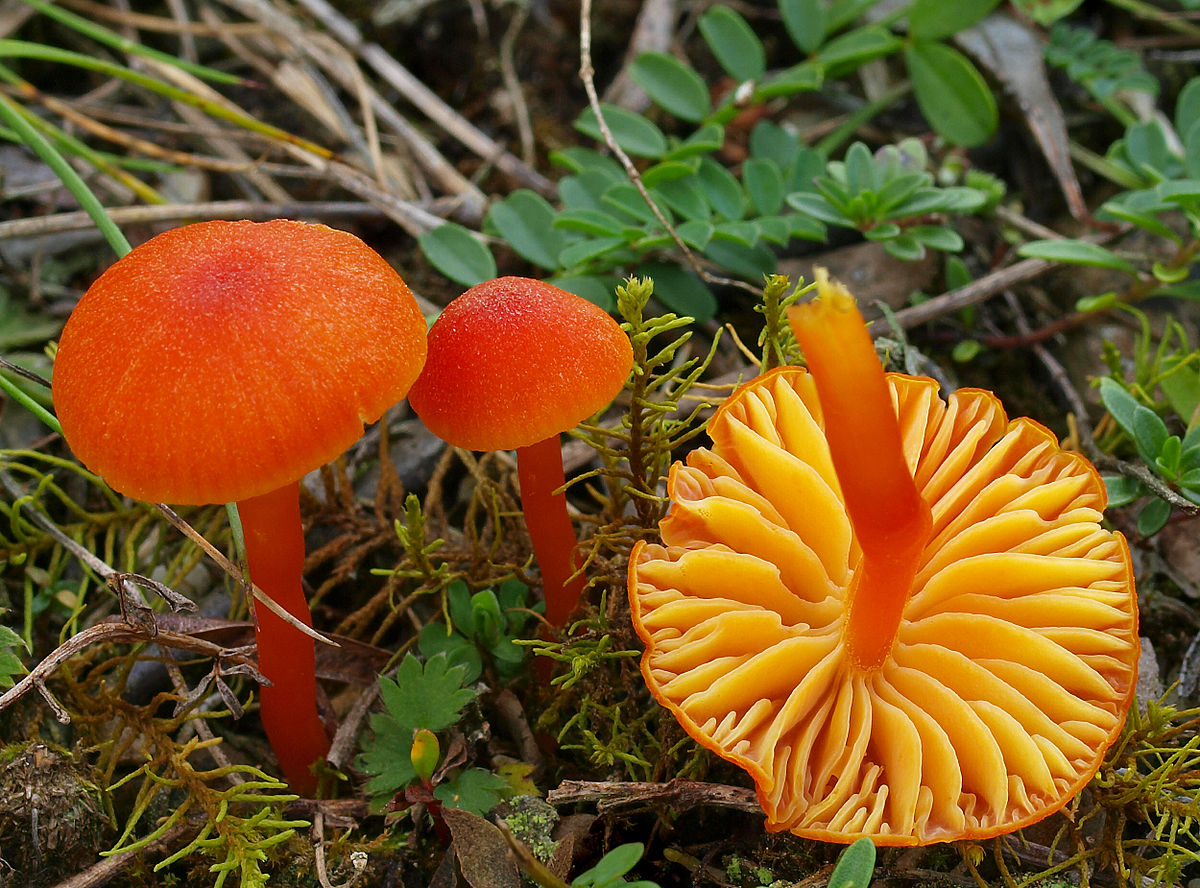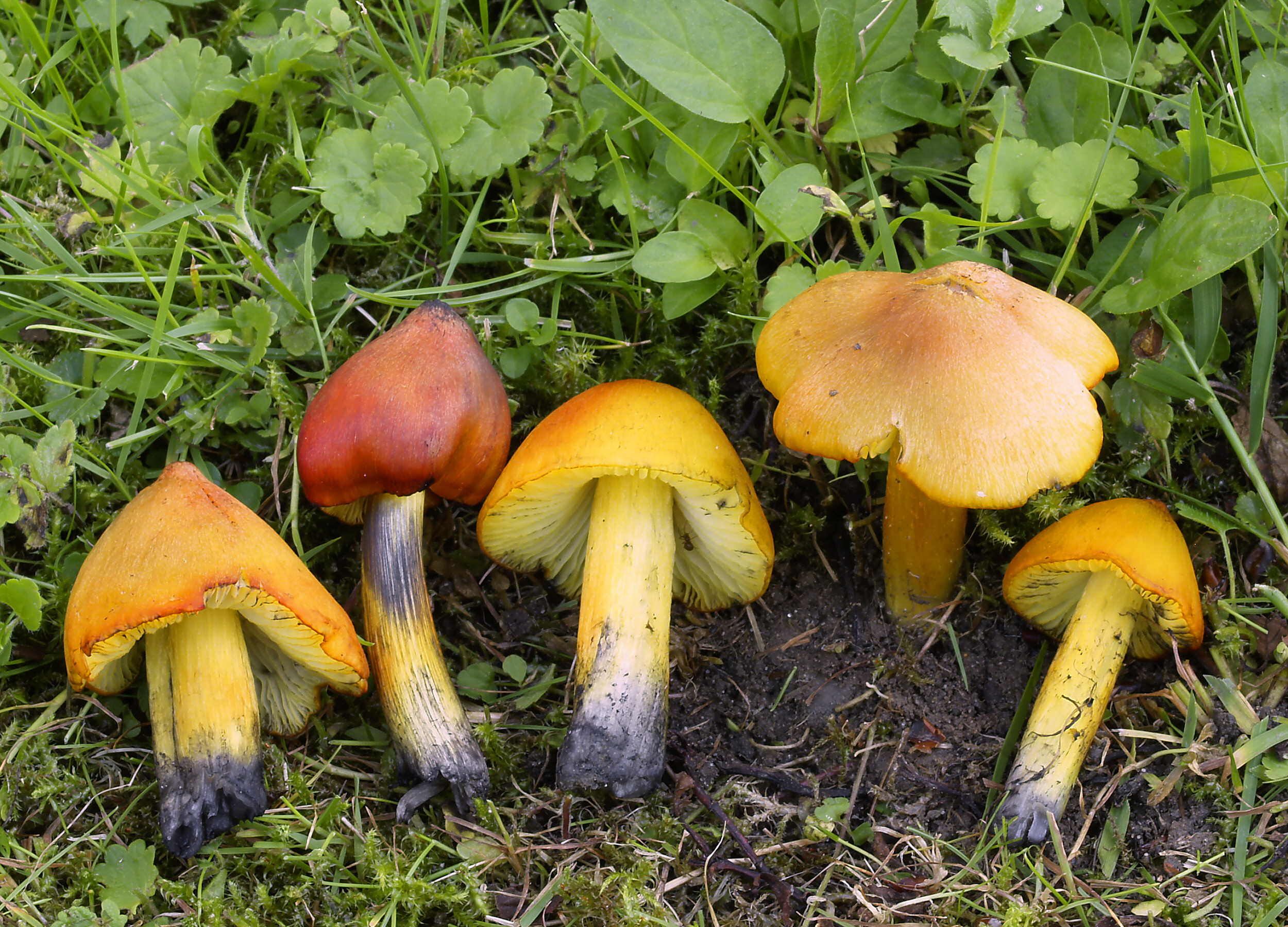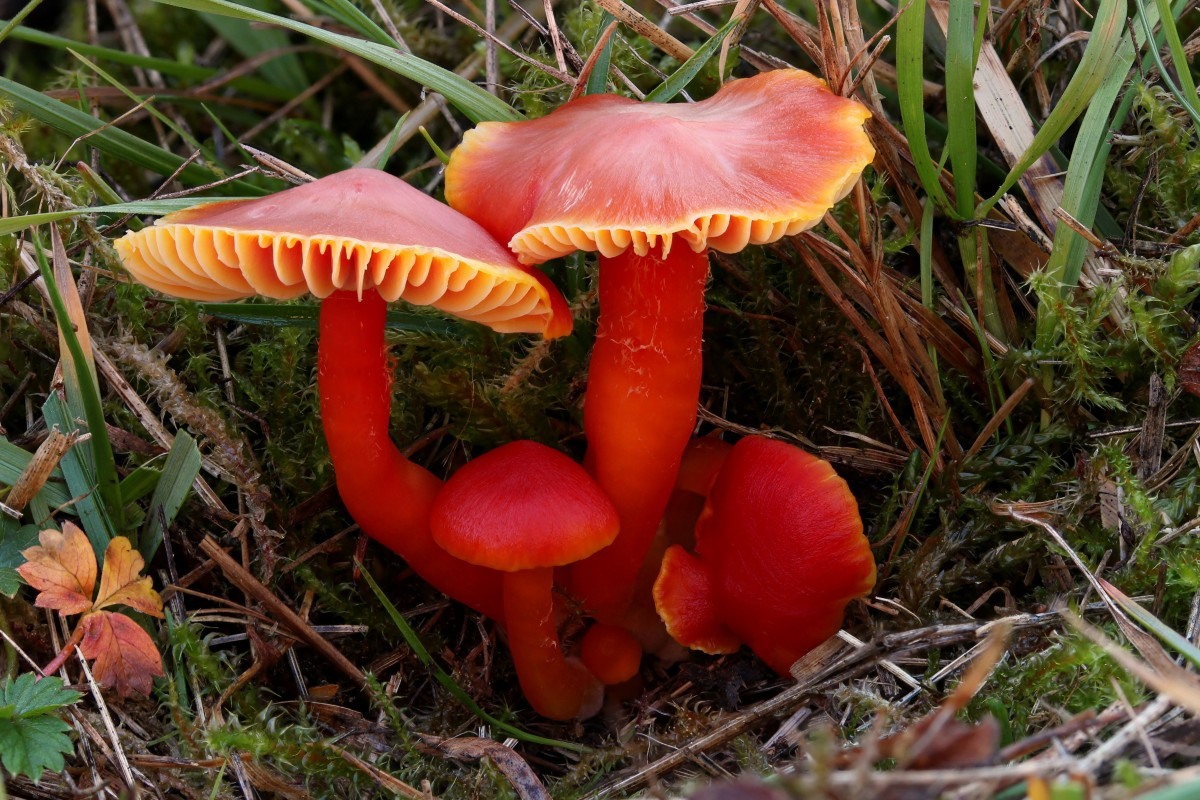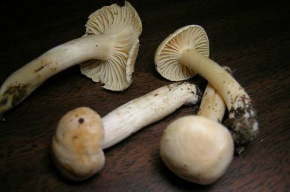Description of hygrocybe wax
The cap of this neat hornbeam is small - its diameter barely reaches 4 centimeters; fruiting bodies with caps of only 1 centimeter are often found. In the stage of active growth, the waxy hygrocybe cap has a slightly convex shape; over time, the cap opens and becomes flat-convex. Some mushrooms have a slight depression in the center.
The color of the cap is predominantly yellow-orange. But with age, the color tends to change. After a certain time, the cap fades and becomes a light yellow color. The surface of the cap is completely smooth, without the slightest roughness. The upper part of the cap is slightly slimy. The flesh of the cap has an interesting property - it swells during wet weather, this is due to the fact that it consists of a loose hypha, in which water is retained. The property of absorbing moisture is scientifically called hygrophane.
The flesh of a wax hygrocybe is quite fragile, and if you press the mushroom, it breaks easily. The color of the pulp is yellow. Hygrocybe wax pulp does not differ in special taste and smell. Under the cap there are quite rarely located plates, they can grow to the stem or descend onto it.
The overall color of the plates is whitish, but there may be a slight yellowish tinge. The edges of the plates are even. Spores are ovoid, white spore powder.

The length of the leg does not exceed 5 centimeters, and its diameter is small - up to 0.4 centimeters. The leg is hollow in structure. Its color is the same as the hat: orange-yellow or yellow. In young specimens, the legs may be somewhat damp. There are no residues of the bedspread in the wax hygrocybe.
The distribution area of hygrocybe wax
Hygrocybe wax is found throughout North America and Europe. These small mushrooms grow singly or in small groups. Favorite growing areas are forests, meadows and moss-covered areas.
Description of the conical hygrocybe
The diameter of the cap is 2-9 centimeters. Young mushrooms are characterized by a cone-shaped pointed cap, and in adulthood, the shape of the cap becomes wide-conical, while a tubercle remains in the middle. The cap most often breaks at the edges. The surface of the cap is fine-fibred, very smooth. In rainy weather, the hat becomes shiny, slightly sticky, and in dry weather, the hat is silky and shiny.
The color of the cap is red-yellow or orange-red, while the tubercle is always much brighter. In old age, mushrooms become darker. If you press on the cap, it also becomes darker.
The leg is even and almost straight, only in the lower part there is a slight thickening. Inside, the leg is hollow, the structure is fine-fiber. The color of the stem is yellow or orange, and whitish at the base. The leg is not covered with mucus.
The conical hygrocybe plates can be located freely or, on the contrary, can be tightly attached to the cap. The edges of the plates widen slightly. The color of the plates is yellowish, but becomes grayish with age. When pressed on the plates, they turn grayish-yellow. The pulp is thin and fragile. The color of the pulp matches the color of the leg. When pressed on the pulp, it turns black. The taste and smell of the pulp are not expressed. Spore white powder. The spores are ellipsoidal, smooth and colorless. Buckled hyphae.

Places of growth of a conical hygrocybe
These mushrooms are found mostly in rare young plantings. Most often they can be found along the roads and in the moorlands. In addition, the conical hygrocybe grows in grassy places: in pastures, glades, meadows. In forests, these mushrooms are much less common. These mushrooms begin to bear fruit in May and continue until October.
The toxicity of the conical hygrocybe
The conical hygrocybe is considered a weakly poisonous mushroom.It is not recommended to eat this type of mushrooms, as these mushrooms can cause eating disorders.

